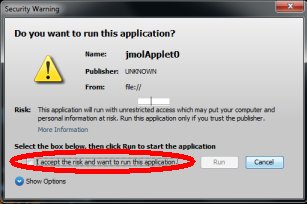I. IntroductionMembers of the Argonaute protein family play key roles in RNA interference pathways (RNAi). RNAi lowers gene expression in response to double-stranded RNA (dsRNA), whether the dsRNAs are endogenous, e.g. pre-miRNA, or exogenous, e.g. viral genomes. The RNAi process is initiated when Dicer, an RNase III family enzyme, cleaves dsRNA into short duplexes (~21 base pairs), each strand possessing a single stranded, two-nucleotide overhang on its 3' end and a phosphate on its 5' terminus. These dsRNAs (siRNAs or miRNAs) are then loaded onto Argonaute (Ago). Once engaged by Ago, one of the siRNA or miRNA strands, the passenger strand, is cut and discarded. The remaining single-stranded RNA (ssRNA) is termed the guide strand. In both RNA-induced initiation of transcriptional gene silencing (RITS), involving heterochromatization of DNA sequences, and in post-transcriptional gene silencing that either cuts mRNA or blocks its translation, Ago acts as the scaffold for the recognition of complementary target sequences by the guide strand. Additionally, as part of the RNA-induced silencing complex (RISC), Ago can catalyze the cleavage (slicing) of target mRNAs. Although members of the Ago protein family are phylogentically diverse, crystallographic analyses of proteins from various Ago subfamilies reveal conserved structures that shed light on their multiple functions. At left is the structure of the Ago protein of the archaebacterium Pyrococcus furiosus as determined by Song, et al. (2004). This tutorial is based primarily on the work of these authors. II. Ago Domain StructureNote: several disordered loops are not resolved in the Ago crystal structure, which results in the appearance of a non- continuous backbone in several visualizations, below. P. furiosus Ago comprises four domains: N-terminal (including a "stalk"); middle; PIWI; and PAZ. An interdomain connector is observed. Together, the N-terminal, PIWI, and middle domains can be visualized as a crescent-shaped base of the Ago protein. The PAZ domain, supported by the stalk, closes the central groove of this crescent. The connector clasps the four major domains of Ago. The N-terminal domain begins with an extended strand/loop that joins a four-stranded beta sheet. This is followed by three alpha helices, with the backbone continuing into the three-stranded stalk subdomain. The middle domain resembles a sugar binding protein family and within this family is most similar to the Lac repressor. The domain comprises a central beta sheet flanked by alpha helices. The PAZ domain contains an OB beta barrel (OB stands for oligonucleotide-oligosaccharide binding) with two alpha helices at the end of the barrel. This OB subdomain is flanked by two additional helices. A prominent cleft between the two subdomains is observed. The role of this cleft in RNA binding will be discussed below. The PIWI domain contains a central, five-stranded beta sheet that is surrounded by alpha helices. This core structure identifies PIWI as an RNase H domain, like those found in other proteins with nuclease or polynucleotidyl transferase functions. The close structural similarity to RNase HI and RNase II indicates that the PIWI domain is responsible for cleavage of target mRNA in RNAi, as discussed further below. A second beta sheet links PIWI to other Ago domains.
III. RNA Binding and CleavageNote: the surface views in the following visualizations require sufficient time to load (~7-15 seconds). Song et al. (2004) used the structure of the human Ago1 (hAgo1) PAZ domain complexed with an siRNA duplex (Ma, et al., 2004) to envision dsRNA binding by Pyrococcus furiosus Ago (PfAgo), as shown at left. The hAgo1 and PfAgo PAZ domains were aligned to position the 3' end of the guide strand and the 5' end of the target strand in PfAgo. The target RNA strand (see below) in the hAgo-RNA complex was then extended into the PfAgo protein by model building. The 3', two-nucleotide overhang of the guide strand is buried in the deep cleft of the PAZ domain (see above). The 5' end of the other strand, representing target mRNA, is sandwiched between the PAZ and N-terminal domains. Focusing on the binding of the 3' end of the guide strand by the PAZ subdomain cleft, the importance of several conserved residues is noted. For example:
Turning now to the target mRNA strand, it can be seen to be wrapped into the central groove of the crescent-shaped base of PfAgo, formed by the N-terminal, PIWI, and middle domains (see above). This groove is largely positively charged (not shown) and thus is hospitable for the negatively charged RNA backbone. The 3' end of the modeled target strand is embedded in the PIWI domain, although in a genuine siRNA of 21 nucleotides, the target would continue in the groove. As mentioned previously, the PIWI domain displays canonical RNase H family structure. RNase H family enzymes typically carry a catalytic "DDE" motif in their active sites, composed of three highly conserved acidic residues required for catalysis. In the Ago PIWI domain, the key active site residues are aspartates(D) 628 and 558 plus histidine(H) 745, a "DDH" motif analogous to "DDE." The close proximity of these residues to the predicted RNA cleavage site, between the last two nucleotides of the model target mRNA strand, indicates their role in RNA cleavage (slicing). Not shown are metal ions required for cleavage that are coordinated by these residues. Note: because of modeling uncertainties, the positions of the RNA relative to PfAgo residues may be distorted. For example, his745 is observed to overlap the RNA backbone, an artifact in this model.
IV. ReferencesMa, J., Ye, K., Patel, D.: Structural basis for overhang-specific small interfering RNA recognition by the PAZ domain. Nature 429: 318-322 (2004). Song, J., Smith, S.K., Hannon, G.J., Joshua-Tor, L.: Crystal Structure of Argonaute and its Implications for RISC Slicer Activity. Science 305: 1434-1437 (2004). Song, J., Joshua-Tor, L.: Argonaute and RNA - getting into the groove. Current Opinion in Structural Biology 16: 5-11. |
|
Acknowledgement: The format of this web page is modified from a template provided by Dr. Angel Herraez, Bioquimica y Biologia Molecular, Universidad de Alcala,
E-28871, Alcala de Henares (Madrid), Spain.
